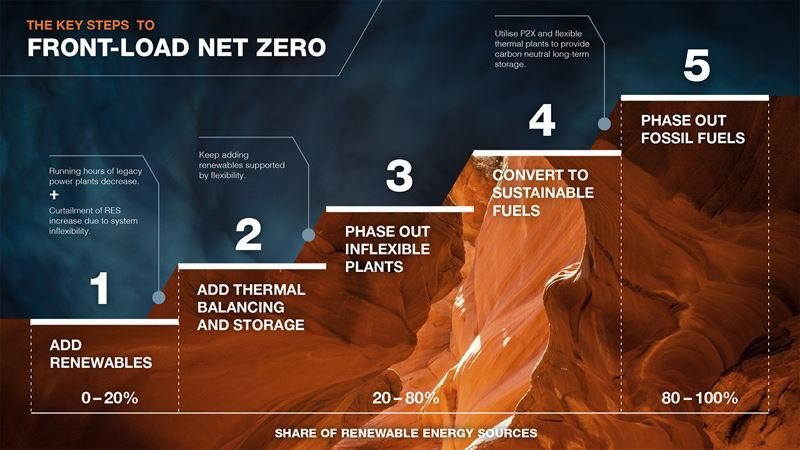Wärtsilä’s latest research, Front Loading New Zero, contends that governments can implement 100 percent renewable systems quicker than currently envisaged.
It claims that considerable cost savings may be realized by prioritizing the development of renewables — mostly wind and solar — and employing the technology required to balance their inherent intermittency with energy storage and thermal producing facilities.

According to the Wärtsilä study, the Indian economy is expanding. It must, however, balance its net zero objective with its fast growing energy demand. Existing legacy coal-fired power plants in the electricity grid provide a barrier to renewable energy, although India boasts among of the world’s lowest solar generation prices.
By constructing a 100 percent renewable energy power grid, India can decrease its overall electricity costs in half and achieve net zero before 2050. The country’s decarbonization might pave the way for other developing and growing economies to follow.

The Wärtsilä modeling for India reveals :-
- Increasing renewable energy from 25% now to 100% by 2050 reduces India’s power costs by 48%.
- A flexible 100 percent renewable system generates huge amounts of surplus electricity, which can help India handle its increasing energy reliance, which is expected to quadruple by 2030.
- Increasing renewable energy may potentially create significant new income from hydrogen generation, generating a $39.8 billion USD technological industry.

There is no one-size-fits-all answer for all markets, and this study illustrates the various pathways and technologies that may be used. The ultimate goal, however, is shared by all: to decarbonize energy production and maximize the use of our natural energy resources.
Reference- Wärtsilä Front Loading New Zero Report, Clean-Technica, The Guardian, Rueters






